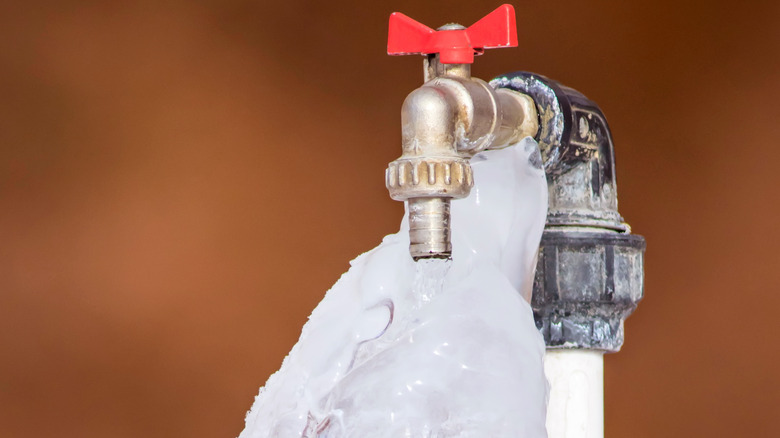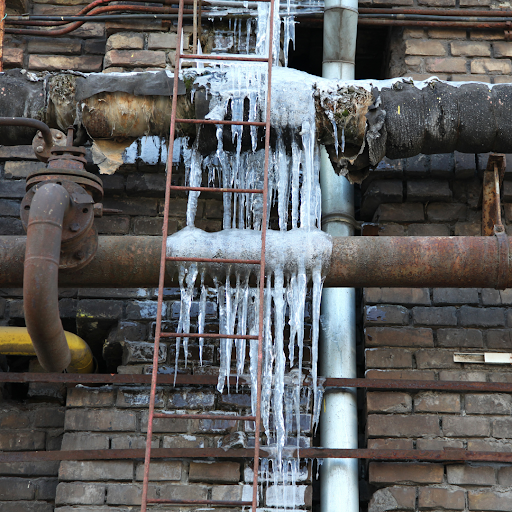Essential Tips to Protect Against Frozen Plumbing in Cold Weather
Essential Tips to Protect Against Frozen Plumbing in Cold Weather
Blog Article
Almost everyone is bound to have their own unique theory about Prevent Frozen Pipes .

Winter can ruin your plumbing, specifically by freezing pipelines. Here's just how to avoid it from taking place and what to do if it does.
Intro
As temperatures decrease, the danger of icy pipelines increases, possibly leading to expensive fixings and water damage. Understanding exactly how to prevent icy pipelines is essential for homeowners in chilly climates.
Understanding Frozen Pipes
What triggers pipes to freeze?
Pipes ice up when revealed to temperature levels listed below 32 ° F (0 ° C) for extended durations. As water inside the pipelines freezes, it expands, taxing the pipeline walls and possibly triggering them to break.
Threats and problems
Frozen pipes can cause water system disturbances, home damages, and expensive fixings. Burst pipelines can flooding homes and trigger considerable architectural damage.
Signs of Frozen Pipes
Determining icy pipes early can prevent them from bursting.
How to identify icy pipes
Look for lowered water flow from taps, unusual smells or noises from pipes, and visible frost on exposed pipelines.
Prevention Tips
Insulating vulnerable pipelines
Cover pipes in insulation sleeves or use warmth tape to protect them from freezing temperature levels. Concentrate on pipes in unheated or external locations of the home.
Heating methods
Keep indoor rooms sufficiently heated up, especially areas with plumbing. Open up cupboard doors to permit cozy air to circulate around pipelines under sinks.
Safeguarding Outside Pipes
Garden hose pipes and outside faucets
Disconnect and drain yard hose pipes prior to winter months. Mount frost-proof spigots or cover outdoor faucets with insulated caps.
What to Do If Your Pipelines Freeze
Immediate actions to take
If you presume icy pipelines, keep faucets available to eliminate stress as the ice thaws. Make use of a hairdryer or towels taken in hot water to thaw pipelines slowly.
Long-Term Solutions
Architectural modifications
Consider rerouting pipelines far from exterior wall surfaces or unheated areas. Add additional insulation to attics, basements, and crawl spaces.
Updating insulation
Invest in high-grade insulation for pipes, attics, and walls. Correct insulation aids keep constant temperature levels and reduces the risk of icy pipes.
Verdict
Stopping frozen pipelines calls for proactive actions and quick feedbacks. By recognizing the causes, indicators, and preventive measures, home owners can secure their pipes throughout winter.
5 Ways to Prevent Frozen Pipes
Drain Outdoor Faucets and Disconnect Hoses
First, close the shut-off valve that controls the flow of water in the pipe to your outdoor faucet. Then, head outside to disconnect and drain your hose and open the outdoor faucet to allow the water to completely drain out of the line. Turn off the faucet when done. Finally, head back to the shut-off valve and drain the remaining water inside the pipe into a bucket or container. Additionally, if you have a home irrigation system, you should consider hiring an expert to clear the system of water each year.
Insulate Pipes
One of the best and most cost-effective methods for preventing frozen water pipes is to wrap your pipes with insulation. This is especially important for areas in your home that aren’t exposed to heat, such as an attic. We suggest using foam sleeves, which can typically be found at your local hardware store.
Keep Heat Running at 65
Your pipes are located inside your walls, and the temperature there is much colder than the rest of the house. To prevent your pipes from freezing, The Insurance Information Institute suggests that you keep your home heated to at least 65 degrees, even when traveling. You may want to invest in smart devices that can keep an eye on the temperature in your home while you’re away.
Leave Water Dripping
Moving water — even a small trickle — can prevent ice from forming inside your pipes. When freezing temps are imminent, start a drip of water from all faucets that serve exposed pipes. Leaving a few faucets running will also help relieve pressure inside the pipes and help prevent a rupture if the water inside freezes.
Open Cupboard Doors
Warm your kitchen and bathroom pipes by opening cupboards and vanities. You should also leave your interior doors ajar to help warm air circulate evenly throughout your home.

I was made aware of that write-up about 6 Ways to Prevent Frozen Pipes from a good friend on our other web property. For those who enjoyed our blog posting plz don't forget to share it. Kudos for your time. Please check our site back soon.
Click Here Report this page